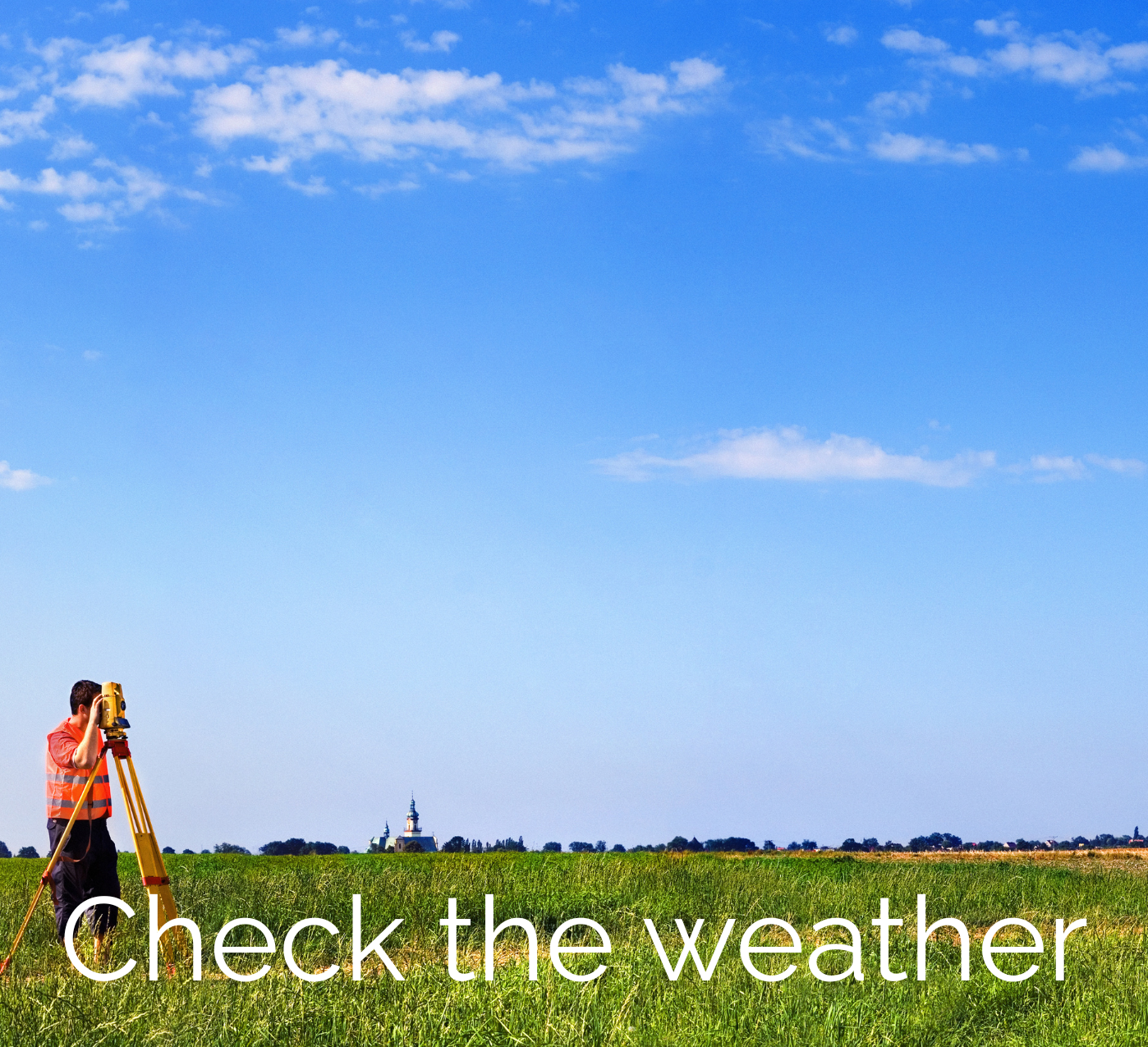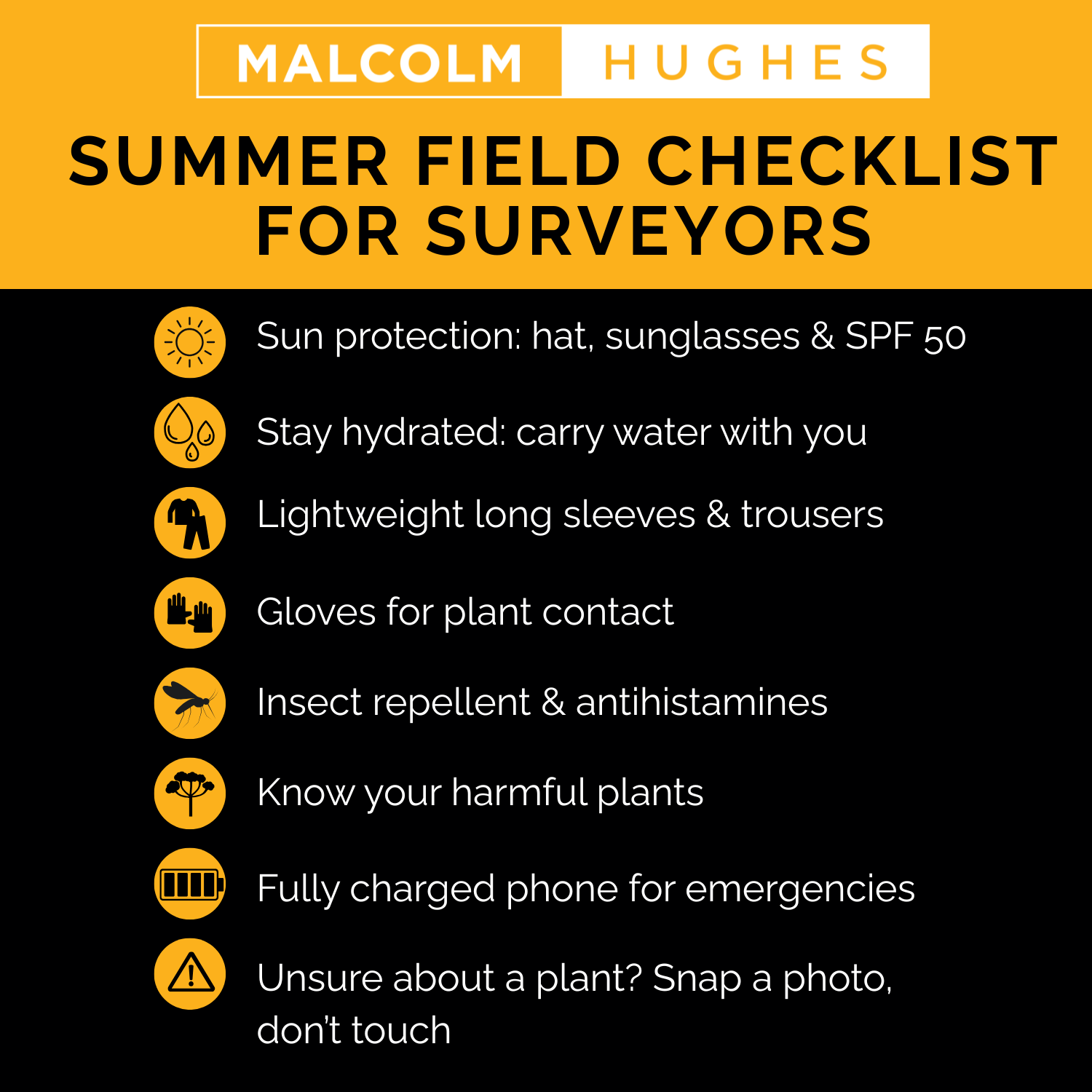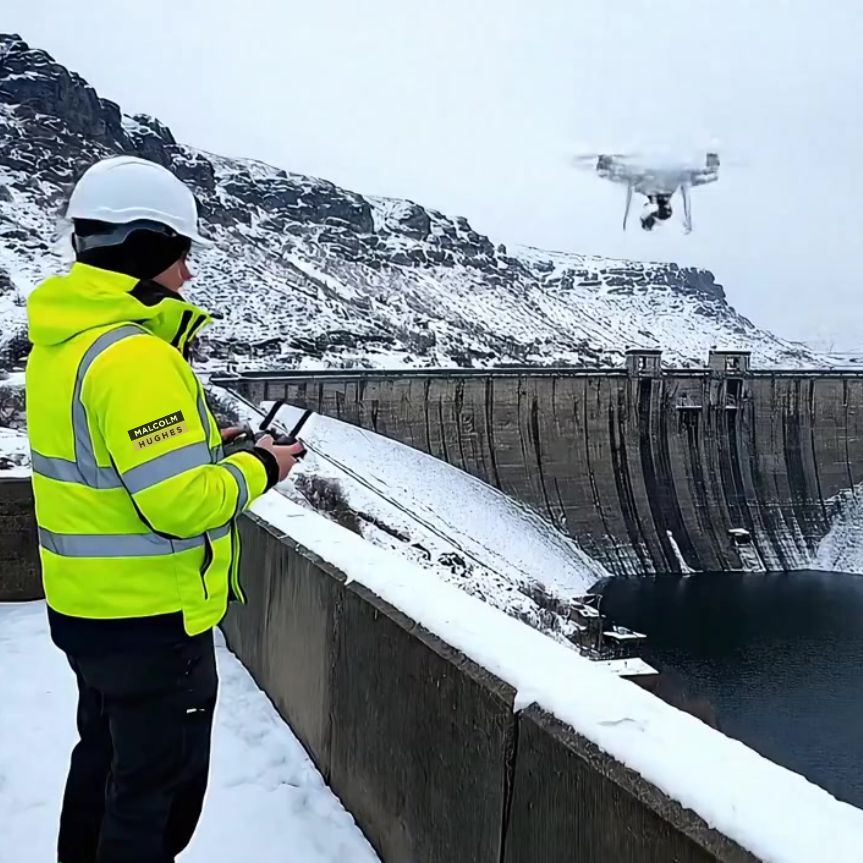Summer Field Surveying: Stay Safe, Stay Aware
Working outdoors in summer is one of the perks of life as a surveyor but it also comes with its own set of risks. From intense sun and heat to hidden hazards like toxic plants and biting insects, surveyors need to stay alert and well-prepared on every job.
Below is a simple summer field checklist and some essential reminders to help you protect yourself during warm weather site work
Summer Field Checklist for Surveyors
Clothing (additional to PPE Requirements)
- Lightweight long-sleeved top & trousers (to protect against sun & plants)
- Wide-brimmed hat or cap
- UV-rated sunglasses
- Gloves (especially when handling vegetation)
Protection & Safety Gear (additional to your First Aid Kit)
- SPF 50 sunscreen (reapply every 2 hours)
- Insect repellent
- Antihistamines (if prone to bites or allergies)
- Drinking water. Bring extra to keep in your vehicle
Communication
- Phone with charged battery & data/photo sharing ability
- Let someone know your location and estimated return time
Bites, Stings & Sunburn: Avoidable with Prep
Summer brings UV exposure and a spike in insects. Use sunscreen generously, reapply regularly, and wear breathable layers that still cover your skin. In high grass or woodland, be cautious of ticks and biting insects. If you do get stung, treat promptly and monitor for allergic reactions.
Don’t Brush it Off: The Risk of Harmful Plants
Some invasive or injurious species can cause serious health issues if brushed against or touched, particularly under sunlight. Giant hogweed, wild parsnip, and even seemingly harmless caterpillars (like the Oak Processionary Moth) can trigger painful rashes, blisters, or breathing difficulties. Always avoid direct contact and report anything suspicious.
Awareness & Identification
- Know how to spot invasive plants like:
- Giant Hogweed (causes severe burns in sunlight)
- Wild Parsnip (toxic sap)
- Ragwort (poisonous to animals)
- Himalayan Balsam, Japanese Knotweed (environmental hazards)
- Recognise Oak Processionary Moth caterpillars: do not touch
- Take a photo of any suspect plant and report it: do not handle directly
Final Tip: When in doubt, take a step back, literally. Avoid contact, take a photo, and escalate to your line manager for identification and further steps. Fieldwork shouldn’t be hazardous with the right mindset and gear.
Stay cool, stay safe, and enjoy your summer surveys. And because this is the UK, Summer health and safety bulletins can also include storm warnings. Check the guidance from your SHEQ manager regarding storm warnings, and always follow the specific advice.










